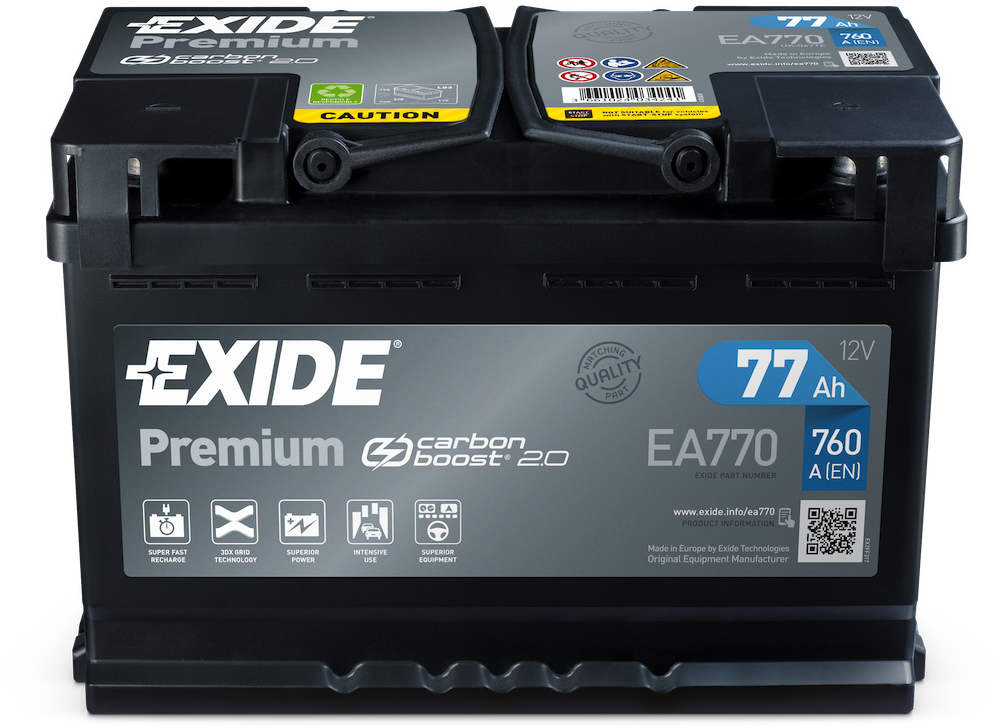Exide Launches New Eco-friendly Premium Battery Design

Exide Technologies, a leading provider of stored electrical energy solutions, is updating its Exide Premium range with a modern new black design with new recycled components for reduced environmental impact. The change will lead to savings of 2,700 tons of CO2, 8 million litres of water and 1.2 million litres of crude oil in Exide’s manufacturing each year.
Slick new design
This battery design features a spill- and spark-proof security lid with double flame arrestor, providing the same superior safety level Exide has always offered with the previous design. This is an original equipment design, which Exide uses for major European car manufacturers. This also means aftermarket customers get the reassurance of a design that has passed the strict requirements of carmakers.
The new design will be introduced for all of Exide Technologies’ top-of-the-line conventional batteries across its various product brands, comprising Exide Premium, Centra Futura, Deta Senator3, Sonnak Powerline, Fulmen FormulaXtreme and Tudor High Tech. The striking design is visually appealing, while the use of recycled components will make a meaningful environmental impact.
Large reduction in environmental impact
“We’re committed to reducing our environmental impact across our business, and we’re pleased that the new Exide Premium design is having such a large impact on these efforts. An annual 2,700 ton reduction in CO2 is a major accomplishment, and we look forward to identifying further environmental savings into the future,” said Stefan Stübing, President & Chief Executive Officer at Exide Technologies.
Exide Premium features Carbon Boost 2.0, Exide’s proprietary application of carbon additives on the negative plates. This allows for up to 2 times faster recharging than conventional batteries. Faster recharging enables higher average state-of-charge throughout battery life, reducing the risk of breakdown and extending battery lifespan. This best-in-class battery is designed to withstand extreme temperature, power-hungry electrical equipment and intensive urban driving.

